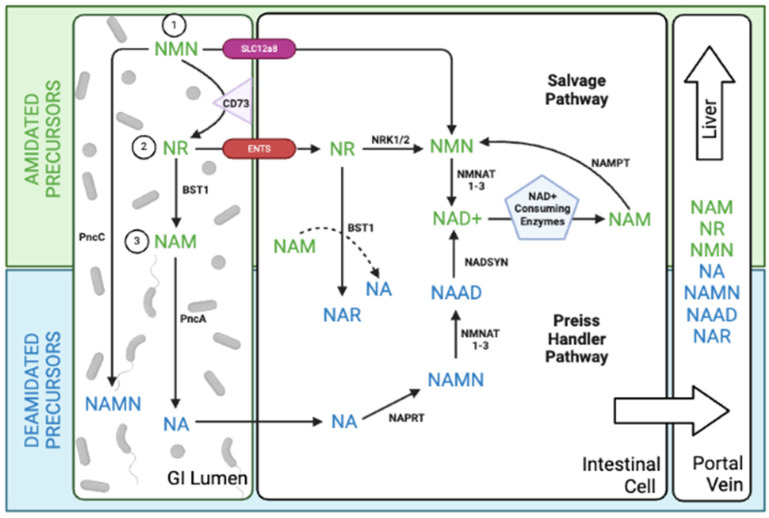Figure 2.
Metabolic fates of orally administered NAD+ Precursors. 1. NMN can be deaminated by the bacterial enzyme pncC to form NAMN. Alternatively, NMN may be broken down by other gut enzymes to produce NR or NAM, which is then metabolized by pncA to form NA and follow the Preiss Handler pathway. This deamidated route results in increased levels of NAR and NAMN in the gut and liver, and elevated NAAD specifically in the liver. A portion of oral NMN may follow the salvage route after direct entry through SLC12a8 or indirect entry through ENTs via conversion to NR. 2. During the early phase of metabolism, oral NR can directly enter cells and undergo the canonical salvage pathway. In the later phase, NR is converted into NAM by BST1, resulting in increased NA in the gut, elevated NA and NAR in the portal blood, and an increase in both amidated (NA, NAR, NAMN, and NAAD) and deamidated (NAM and NMN) metabolites in the liver. Additionally, NR may undergo a BST-1 catalyzed base-exchange reaction using NAM and NR, converting it to NAR. 3. NAM is rapidly converted to NA by the bacterial enzyme pncA in the colon, leading to elevation of deamidated precursors (NAMN, NAR, and NAAD) as well as amidated precursors (NAM and NMN) in the gut cell, portal vein, and liver. Figure created in BioRender.

